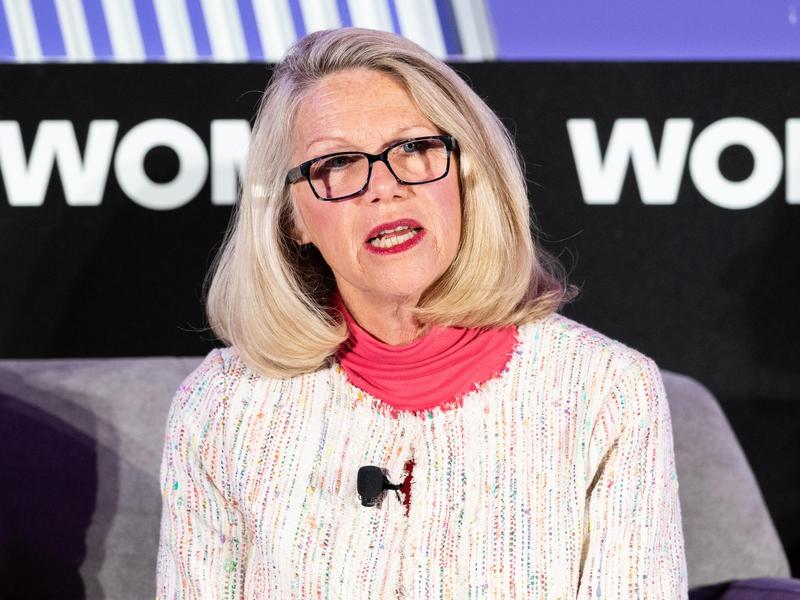
Washington is a town full of smart people, and one of the smartest is Bruce Mehlman of the bipartisan lobbying firm of Mehlman Castagnetti Rosen & Thomas. It isn’t the bachelor’s degree from Princeton or the law degree from the University of Virginia that make Mehlman stand out, nor is it his past positions as policy director for the House Republican Conference or as assistant secretary of Commerce during George W. Bush’s administration. It is his consistently insightful and creative quarterly PowerPoint presentations that he sends out to clients and friends, and puts on his firm’s website.
Mehlman typically starts off with a look at politics from 40,000 feet, what I call the “macro-political” world, then gradually brings the altitude down to the treetop level with a legislative and electoral outlook for the coming months. This week, his 2017 fourth-quarter presentation, “Navigating the New Gilded Age—Why Change Is Coming … Again,” hit my inbox, and I was impressed yet again.
In his first section, “How Modern America Is In a New Gilded Age,” Mehlman compares the last quarter-century of the 19th century to what is occurring today. In the first Gilded Age, the United States moved from an agricultural economy to one that depended on manufacturing. Today, manufacturing is in eclipse and services are ascendant. He also points out that in that first Gilded Age, fears lingered from the financial crises in 1873, 1893, and 1907; today, the 2007-08 financial crisis is still not far from people’s minds. As in the first Gilded Age, Mehlman observes, the global trade that powers growth creates both winners and losers, and laws and regulations designed more than a century ago are insufficient for the new economy.
Next, Mehlman compares barons of the first Gilded Age—Andrew Carnegie (steel), John D. Rockefeller (oil), and Cornelius Vanderbilt (railroads)—to the titans of today—Jeff Bezos (Amazon), Sergey Brin and Larry Page (Google), and Mark Zuckerberg (Facebook). Mehlman asks: “If Data is the New Oil, is Bezos the New Rockefeller?” In both Gilded Ages, iconic innovators reshaped the economy, built huge market shares, and amassed vast fortunes.
Turning more political, Mehlman points to the intense divisions in both of these Gilded Ages. Each featured two presidential elections in which the Electoral College winners lost the popular vote—in 1876 and 1888, and then again in 2000 and 2016. The rich got a lot richer in both periods, with fear and frustration fueling populist backlashes each time. Immigrants, trade, globalism, and the political parties shouldered the blame in both Gilded Ages.
Next, Mehlman looks at how the first Gilded Age ended and what it means for today. Back then, populist passions led to economic reforms that are now outmoded and ill-equipped to deal with the vast changes that have occurred in the Second Gilded Age. Mehlman’s presentation looks at how success in modern America depends on geography and education, and in which sector of the economy a person works.
He portrays a vertical class-war axis pitting insiders (Goldman Sachs is good, globalization works, America should lead the world) against outsiders (tax the rich, trade is bad, punish Wall Street, stop nation-building). Then he paints a more traditional left-right horizontal axis with immigration, racial equality, LGBTQ rights, and gun-control advocates on the Left pitted against white-identity activists on the Right who want less immigration, strongly support the Second Amendment, and think racial and LGBTQ issues are overblown. He asks whether social networks are the new muckrakers, or empowered activists, or vigilante mobs.
Mehlman examines President Trump’s extraordinarily high approval ratings among those who supported him last year and his seeming inability to win over people who didn’t because of cultural antipathies and anger over his nationalist populist message. The presentation notes the 41 record highs in the Dow Jones Industrial Average this year, the administration’s massive deregulation effort, and its determination to remake the federal judiciary.
Then he ventures into imponderables: the impact of the very different worldviews of Trump and GOP congressional leaders; the possibility of more deals with Democratic leaders and their effect on Democratic Party cohesion; and how rising protectionism, nationalism, and populism are putting pressure on the technology sector, the golden goose of today’s economy. In the political sector, Mehlman looks at the increasingly national nature of midterm elections; asks whether a reconstituted tea party, reflected in Breitbart, is back with a vengeance and targeting establishment Republicans in primaries; and wonders who or what will be Trump’s new foil, given his success demonizing others on his climb to the top.
All of this just scratches the surface of Mehlman’s thought-provoking presentation, which reminds us to take time out from day-to-day events and look at the big picture. Obviously a lot of people have various theories to explain where we are and where we are headed, but few are as sensible and fair-minded as Mehlman
This story was originally published on nationaljournal.com on October 5, 2017









Subscribe Today
Our subscribers have first access to individual race pages for each House, Senate and Governors race, which will include race ratings (each race is rated on a seven-point scale) and a narrative analysis pertaining to that race.